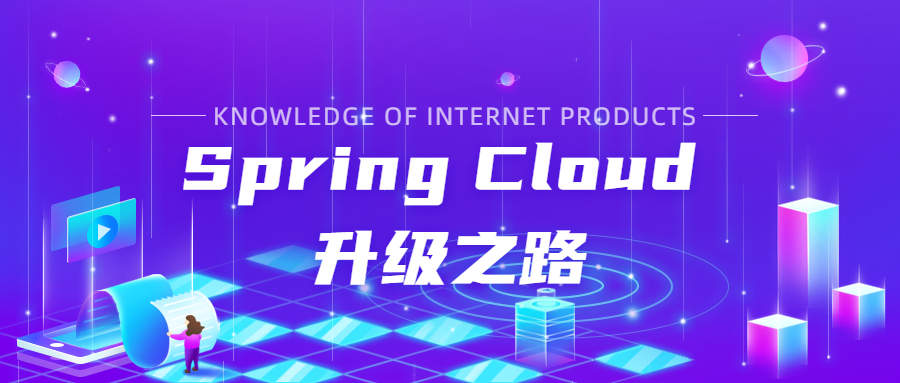
本系列代码地址:https://github.com/HashZhang/spring-cloud-scaffold/tree/master/spring-cloud-iiford

源代码文件:https://github.com/HashZhang/spring-cloud-scaffold/blob/master/spring-cloud-iiford/pom.xml
1. 使用 log4j2 异步日志所需要的依赖:需要排除默认的日志实现 logback,增加 log4j2 的依赖,并且添加 log4j2 异步日志需要的 disruptor 依赖。
<!--日志需要用log4j2-->
<dependency>
<groupId>org.springframework.boot</groupId>
<artifactId>spring-boot-starter</artifactId>
<exclusions>
<exclusion>
<groupId>org.springframework.boot</groupId>
<artifactId>spring-boot-starter-logging</artifactId>
</exclusion>
</exclusions>
</dependency>
<dependency>
<groupId>org.springframework.boot</groupId>
<artifactId>spring-boot-starter-log4j2</artifactId>
</dependency>
<!--log4j2异步日志需要的依赖,所有项目都必须用log4j2和异步日志配置-->
<dependency>
<groupId>com.lmax</groupId>
<artifactId>disruptor</artifactId>
<version>${disruptor.version}</version>
</dependency>2. javax.xml 的相关依赖。我们的项目使用 JDK 11。JDK 9 之后的模块化特性导致 javax.xml 不自动加载,所以需要如下模块:
<dependency>
<groupId>javax.xml.bind</groupId>
<artifactId>jaxb-api</artifactId>
<version>${jaxb.version}</version>
</dependency>
<dependency>
<groupId>com.sun.xml.bind</groupId>
<artifactId>jaxb-impl</artifactId>
<version>${jaxb.version}</version>
</dependency>
<dependency>
<groupId>org.glassfish.jaxb</groupId>
<artifactId>jaxb-runtime</artifactId>
<version>${jaxb.version}</version>
</dependency>
<dependency>
<groupId>com.sun.xml.bind</groupId>
<artifactId>jaxb-xjc</artifactId>
<version>${jaxb.version}</version>
</dependency>
<dependency>
<groupId>javax.activation</groupId>
<artifactId>activation</artifactId>
<version>${activation.version}</version>
</dependency>3. 使用 Junit 5 进行单元测试,Junit 5 使用可以参考:Junit5 user guide
<dependency>
<groupId>junit</groupId>
<artifactId>junit</artifactId>
<scope>test</scope>
</dependency>4. 使用 Spring Boot 单元测试,可以参考:features.testing
<dependency>
<groupId>org.springframework.boot</groupId>
<artifactId>spring-boot-starter-test</artifactId>
<scope>test</scope>
</dependency>5. mockito扩展,主要是需要mock final类:Spring Boot 单元测试已经包含了 mockito 依赖了,但是我们还需要 Mock final 类,所以添加以下依赖:
<!--mockito扩展,主要是需要mock final类-->
<dependency>
<groupId>org.mockito</groupId>
<artifactId>mockito-inline</artifactId>
<version>${mokito.version}</version>
<scope>test</scope>
</dependency>6. embedded-redis:使用 embedded-redis 用于涉及 Redis 的单元测试:如果你的单元测试需要访问 redis,则需要在测试前初始化一个 redis,并在测试后关闭。使用 embedded-redis 就可以。我们在 spring-cloud-parent 中已经添加了这个依赖,所以可以直接使用。参考:embedded-redis
<dependency>
<groupId>com.github.kstyrc</groupId>
<artifactId>embedded-redis</artifactId>
<version>${embedded-redis.version}</version>
<scope>test</scope>
</dependency>7. sqlite 单元测试依赖:对于数据库的单元测试,我们可以使用 SQLite。参考:sqlite-jdbc
<dependency>
<groupId>org.xerial</groupId>
<artifactId>sqlite-jdbc</artifactId>
<version>${sqlite-jdbc.version}</version>
<scope>test</scope>
</dependency>8. 指定编译级别为 Java 11
<build>
<plugins>
<plugin>
<groupId>org.apache.maven.plugins</groupId>
<artifactId>maven-compiler-plugin</artifactId>
<version>3.8.1</version>
<configuration>
<source>11</source>
<!--ingore javac compiler assert error-->
<forceJavacCompilerUse>true</forceJavacCompilerUse>
<target>11</target>
</configuration>
</plugin>
</plugins>
</build>
作为使用 spring 与 spring boot 框架的公共依赖 spring-framework-common 项目是一个纯依赖的项目。
1. 内部缓存框架统一采用caffeine:这是一个很高效的本地缓存框架,接口设计与 Guava-Cache 完全一致,可以很容易地升级。性能上,caffeine 源码里面就有和 Guava-Cache, ConcurrentHashMap,ElasticSearchMap,Collision 和 Ehcache 等等实现的对比测试,并且测试给予了 yahoo 测试库,模拟了近似于真实用户场景,并且,caffeine 参考了很多论文实现不同场景适用的缓存,例如:
- Adaptive Replacement Cache:http://www.cs.cmu.edu/~15-440/READINGS/megiddo-computer2004.pdf
- Quadruply-segmented LRU:http://www.cs.cornell.edu/~qhuang/papers/sosp_fbanalysis.pdf
- 2 Queue:http://www.tedunangst.com/flak/post/2Q-buffer-cache-algorithm
- Segmented LRU:http://www.is.kyusan-u.ac.jp/~chengk/pub/papers/compsac00_A07-07.pdf
- Filtering-based Buffer Cache:http://storageconference.us/2017/Papers/FilteringBasedBufferCacheAlgorithm.pdf
所以,我们选择 caffeine 作为我们的本地缓存框架,参考:caffeine
<dependency>
<groupId>com.github.ben-manes.caffeine</groupId>
<artifactId>caffeine</artifactId>
</dependency>2. 使用 google 的 java 开发库 guava:guava 是 google 的 Java 库,虽然本地缓存我们不使用 guava,但是 guava 还有很多其他的元素我们经常用到。参考:guava docs
<dependency>
<groupId>com.google.guava</groupId>
<artifactId>guava</artifactId>
<version>${guava.version}</version>
</dependency>3. 内部序列化统一采用fastjson:注意 json 库一般都需要预热一下,后面会提到怎么做。参考:fastjson
<dependency>
<groupId>com.alibaba</groupId>
<artifactId>fastjson</artifactId>
<version>${fastjson.version}</version>
</dependency>4. 使用 lombok 简化代码,参考:projectlombok
<dependency>
<groupId>org.projectlombok</groupId>
<artifactId>lombok</artifactId>
</dependency>5. 调用路径记录 - sleuth。参考:spring-cloud-sleuth
<dependency>
<groupId>org.springframework.cloud</groupId>
<artifactId>spring-cloud-starter-sleuth</artifactId>
</dependency>6. 跨线程 ThreadLocal。参考:transmittable-thread-local
<dependency>
<groupId>com.alibaba</groupId>
<artifactId>transmittable-thread-local</artifactId>
<version>${transmittable-thread-local.version}</version>
</dependency>7. Swagger 相关。参考:swagger
<!--Swagger-->
<!-- swagger java元数据集成 -->
<dependency>
<groupId>io.springfox</groupId>
<artifactId>springfox-swagger2</artifactId>
<version>${swagger.version}</version>
</dependency>
<!-- swagger 前端页面 -->
<dependency>
<groupId>io.springfox</groupId>
<artifactId>springfox-swagger-ui</artifactId>
<version>${swagger.version}</version>
</dependency>8. Apache Commons 相关工具包。我们会使用一些 Commons 工具包,来简化代码:
<!-- https://mvnrepository.com/artifact/org.apache.commons/commons-lang3 -->
<dependency>
<groupId>org.apache.commons</groupId>
<artifactId>commons-lang3</artifactId>
</dependency>
<!-- https://mvnrepository.com/artifact/org.apache.commons/commons-collections4 -->
<dependency>
<groupId>org.apache.commons</groupId>
<artifactId>commons-collections4</artifactId>
<version>${commons-collections4.version}</version>
</dependency>
<!-- https://mvnrepository.com/artifact/org.apache.commons/commons-text -->
<dependency>
<groupId>org.apache.commons</groupId>
<artifactId>commons-text</artifactId>
<version>${commons-text.version}</version>
</dependency>
本小节我们详细说明了我们所有项目的 parent,以及 使用了 Spring 与 Spring Boot 特性的工具包依赖 spring-framework-common 的设计。下一节我们将详细分析提供微服务特性的依赖。
微信搜索“我的编程喵”关注公众号,每日一刷,轻松提升技术,斩获各种offer:


